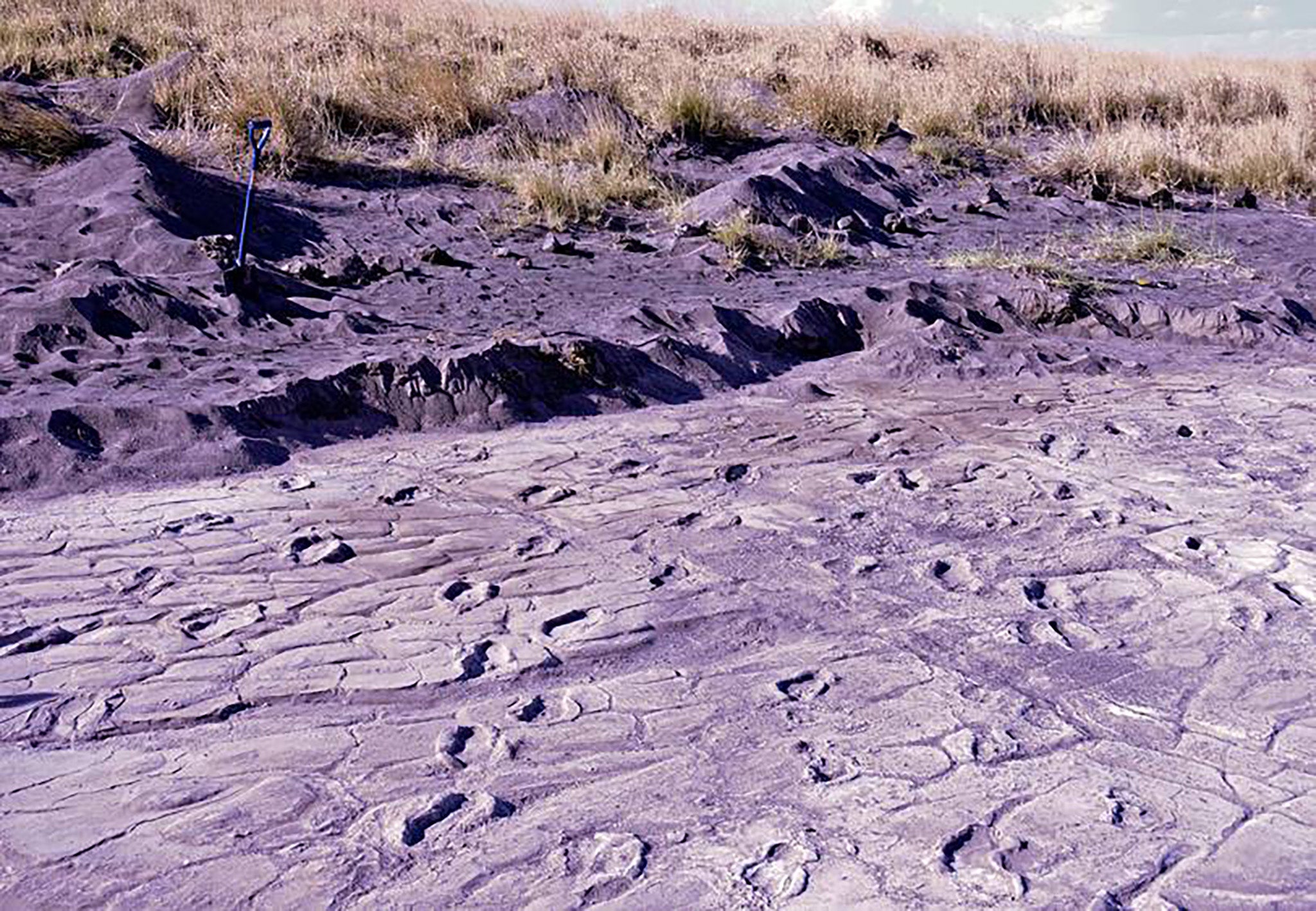How ancient footprints are increasingly revealing the secrets of the past
Archaeology correspondent David Keys says forensic-style expertise means we can glean more than ever from these marks

The remarkable investigation into more than 400 prehistoric human footprints in east Africa, carried out by American scientists, showcases an extraordinary and exciting new and emerging aspect of archaeology.
In the past, virtually all knowledge about our pre-agricultural Stone Age past has come from the study of stone and other tools, food debris, human skeletal material, bone and ivory sculptures, and of course rock and the cave art.
But over the past four decades (and especially over the past 15 years), a new “sub-discipline” has emerged – the study of prehistoric footprints.
As forensic-style expertise has grown, so has the amount of new knowledge that can be extracted from such prints. Over recent years, literally thousands have come to light.
This new way of uncovering the secrets of the distant past is enabling scientists to extract behavioural, economic and social dynamics information that they would rarely have been able to obtain from other types of archaeological work.
Using 3D laser scanning, 3D photogrammetry, sophisticated computer software and geomorphological as well, as archaeological skills, investigators have increasingly been able to reconstruct the daily lives of people who lived thousands and sometimes hundreds of thousands or even millions of years ago.
With these emerging techniques, they are now often able to calculate how fast the ancient “footprint-makers” were moving across a given landscape, how heavy or tall they were, sometimes approximately how old they were and often which sex they probably were.
What’s more, sometimes investigators can even work out the individual’s gait, their foot morphology and even what injuries their feet had sustained.
And all this data, when analysed in conjunction with more conventional archaeological information, can often help determine the sorts of economic and social activities, the prehistoric footprint-makers were engaged in.
The oldest human footprints in the world (from Laetoli in Tanzania) date back over 3 million years – some in Kenya 1.5 million years.
The oldest in Britain (in East Anglia) date back to between 800,000 and 1 million years ago – with examples from Italy and South Africa, clocking in at 350,000 and 120,000 years, respectively.
In western France, archaeologists have even been able to study Neanderthal footprints – and in Mexico some potentially 40,000-year-old prints could help determine the dating of the original peopling of the Americas.
Yet more prehistoric footprints have been discovered over recent years in Australia, Nicaragua, Namibia, South Korea and Argentina.
The Namibian example is unique – as it reveals the day-to-day activities of a group of children and teenagers (some as young as five years of age) who, when they left their footprints in some mud, were busy following a group of goats 15 centuries ago.
The Tanzanian Laetoli prints also involved a child – and archaeologists have suggested that the arrangement of his or her prints shows that he or she was engaged in play. If so, it would demonstrate that human childhood playfulness substantially predates the emergence of our own species.
Footprints from the distant past have a unique capacity to almost photographically record candid unrehearsed aspects of daily life long ago. They are, in a way, snapshots from the Stone Age.
Join our commenting forum
Join thought-provoking conversations, follow other Independent readers and see their replies
Comments